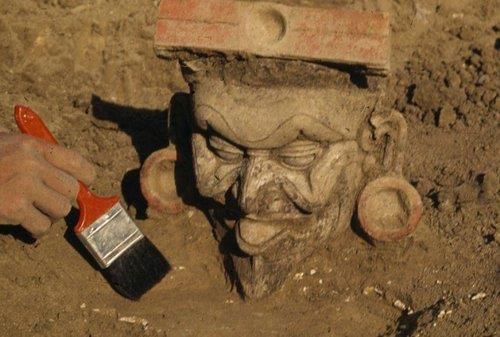|
Card: 2 / 60 |
A skull and skeletal fragments that were identified as belonging to an extinct form of human.  |
|
Card: 3 / 60 |
Fill in the blanks: The Latin word 'Homo' means ___ and refers to the genus that includes modern humans. |
|
Card: 5 / 60 |
True or False: The Australopithecus had a larger brain size compared to modern humans. |
|
Card: 11 / 60 |
What major adaptation is associated with hominids that differentiates them from hominoids? |
|
Card: 13 / 60 |
Fill in the blank: The species that thrived during the glaciation period and replaced Australopithecus were members of the ___ genus. |
|
Card: 15 / 60 |
True or False: The earliest fossils of Homo sapiens were found primarily in Africa. |
|
Card: 19 / 60 |
Riddle: I am a tool-making species that lived around 35,000 years ago, known for developing new hunting technologies. Who am I? |
|
Card: 21 / 60 |
Fill in the blank: The brain of Homo habilis had features that may indicate the development of ___ as early as 2 million years ago. |
|
Card: 24 / 60 |
Archaeological sites like Box Grove and Schoningen show evidence of organized hunting strategies.  |
|
Card: 25 / 60 |
True or False: The Replacement model suggests that modern humans evolved simultaneously in different regions of the world. |
|
Card: 26 / 60 |
False; the Replacement model suggests that modern humans originated in Africa and replaced archaic humans.  |
|
Card: 28 / 60 |
Fire provided warmth, light, protection from predators, and was used for cooking and tool-making.  |
|
Card: 29 / 60 |
Fill in the blank: The term 'hominids' refers to members of the family ___ which includes modern humans and their ancestors. |
|
Card: 31 / 60 |
Riddle: I represent the earliest known humans with a small brain and heavy jaws, often found in Africa. What am I? |
|
Card: 34 / 60 |
They provide crucial evidence for the existence of early hominids, particularly Australopithecus. |
|
Card: 35 / 60 |
Fill in the blank: The evolution of the vocal tract occurred around ___ years ago, contributing to the development of spoken language. |
|
Card: 37 / 60 |
True or False: The art found in caves like Lascaux and Chauvet is believed to have no connection to hunting rituals. |
|
Card: 38 / 60 |
False; it is suggested that the art may have been part of rituals for successful hunting.  |
|
Card: 41 / 60 |
Riddle: I am a type of ancient human that lived in Africa and was known for making stone tools. Who am I? |
|
Card: 43 / 60 |
Fill in the blank: The fossils of Homo neanderthalensis were discovered in the ___ valley. |
|
Card: 46 / 60 |
The Regional continuity model posits that modern humans evolved simultaneously from local archaic humans in different regions. |
|
Card: 47 / 60 |
True or False: Evidence suggests that early humans were primarily nomadic and did not establish any form of permanent residence. |
|
Card: 48 / 60 |
False; they established seasonal camps and occasionally returned to resource-rich areas.  |
|
Card: 49 / 60 |
What was the impact of glaciation on early human species like Australopithecus? |
|
Card: 50 / 60 |
It led to their extinction due to changing climates and vegetation that favored Homo species.  |
|
Card: 51 / 60 |
Fill in the blank: The use of ___ allowed early humans to carry objects and children while being bipedal. |
|
Card: 53 / 60 |
Riddle: I am a type of ancient people considered the first to use tools, who am I? |
|
Card: 55 / 60 |
What does the presence of multiple types of artefacts at a site indicate about early human activity? |
|
Card: 56 / 60 |
It suggests that the site was frequently visited and used for various activities.  |
|
Card: 57 / 60 |
Fill in the blank: The earliest evidence of sewn clothing dates back to approximately ___ years ago. |
|
Card: 60 / 60 |
Hominoids have smaller brains and are quadrupeds, while hominids exhibit upright posture, bipedalism, and larger brains.  |

































